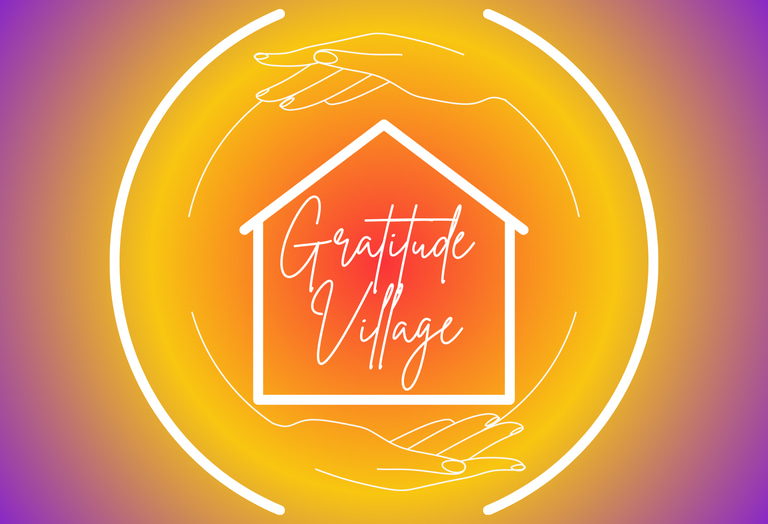Join our next Info Session December 16 from 5:00-6:00 MST Via Zoom (register for link)
What Happens When We Design Neighborhoods for People Instead of Traffic?
At Gratitude Village, removing cars from the center reclaims space for gardens, play, and connection. See how people-first design transforms life
Gratitude Village
6/28/20254 min read


Close your eyes for a moment and imagine this: you step outside your front door into the warmth of the sun. You hear birds singing, wind whispering through the trees, and the soft laughter of children at play. What you don’t hear are engines revving, horns honking, or the constant hum of traffic. There are no cars racing past, no fear when a child’s ball rolls into the open space, no need to shout to be heard over the noise. Just quiet, just peace, just presence—and a neighborhood that feels alive in a very different way.
This is the reality we are designing at Gratitude Village—a community built around people, not pavement. In most modern neighborhoods, streets dominate the landscape. Wide roads, front-facing garages, and fenced-in yards prioritize vehicles over human connection. The result is a world where convenience masks isolation, and neighbors often pass each other like strangers. But what if we flipped that script? What if the heart of the neighborhood was designed for life, not traffic?
Walkability Is More Than a Buzzword
At Gratitude Village, walkability doesn’t just mean it’s possible to walk—it means you want to walk. Our homes open onto pedestrian pathways instead of driveways, and the center of our community is a car-light, people-first space where movement is slow, safe, and social. Cars are still accommodated, but they are treated as guests, not the main event. Footpaths, gardens, play areas, and community gathering spaces take priority over asphalt and parking spaces. It’s a shift that restores daily life to a more human scale—one that invites spontaneous interaction and meaningful connection.
When cars are removed from the center of a neighborhood, beautiful things happen. Children can roam freely without fear. Neighbors linger in conversation without shouting over engines. Lush green spaces replace concrete, filling the air with the scent of flowers rather than exhaust fumes. Evening walks become joyful, safe experiences instead of stressful navigation around busy streets. It’s not a utopia—it’s simply a better, more thoughtful way to live.
Space Reclaimed Is Space Reimagined
Without the need for wide streets, parking lots, and endless curbs, valuable space opens up—and with it, new possibilities for community life. At Gratitude Village, that reclaimed space is being transformed into gardens, pathways, and parks. Community gardens will flourish where cul-de-sacs might have been. Meandering paths will guide residents past colorful gardens and welcoming porches instead of garage doors. Small pocket parks will create little green oases where friendships can bloom.
Outdoor gathering spaces strung with lights will offer places to laugh, share meals, and celebrate under the stars. Front porches will no longer face a sea of cars but instead open onto a lively village green. The result is not just a quieter, more beautiful environment—it’s one that nourishes the human spirit. In the absence of traffic noise, the sounds of true community return: a neighbor calling hello, children playing tag, a shared song drifting from an open window. These are the sounds that make a neighborhood feel like home.
A Place Where Kids Can Roam Freely
Many of us remember a childhood filled with long afternoons spent outdoors, exploring, running, and playing without worry. Sadly, that experience has become rare in today’s car-centric neighborhoods. At Gratitude Village, we are bringing it back. With a car-free central green, children can move safely and confidently, developing independence and creativity in a way that fenced backyards simply can't replicate.
Parents can breathe easier knowing that their kids are in a community where everyone looks out for one another. Children of different ages will play together, learning social skills and building lasting friendships. Independence will blossom naturally, and children will grow up with a sense of belonging—not just to their family, but to the whole village. Gratitude Village isn’t about closing gates; it’s about opening arms. It’s about fostering a place where freedom, safety, and shared responsibility coexist.
Accessible and Sustainable for All Ages
A car-light community isn’t just good for families with young children—it benefits everyone. Older adults who may no longer drive can remain independent, strolling to gatherings and activities without relying on cars. Adults with disabilities enjoy easier navigation and a landscape built with accessibility in mind. Commuters can easily access public transportation options nearby, including Denver’s light rail system. Visitors are greeted by a village designed for walking, resting, and connecting, not dodging traffic.
And for those who still need to drive, Gratitude Village provides perimeter parking, EV chargers, bike storage, and shared vehicle options that reduce individual costs and environmental impact. We aren’t eliminating cars. We’re simply redesigning our space so that cars don’t eliminate connection. It’s a community designed for ease, inclusion, and sustainability at every stage of life.
Better for the Planet—and the People On It
Designing a community around people instead of traffic doesn’t just feel better—it’s better for the Earth. Fewer cars mean less pollution, healthier air and soil, and a significantly reduced carbon footprint. With less pavement, we can reduce the heat island effect and create more space for native landscaping, rain gardens, and pollinator habitats. Gratitude Village is not just a charming place to live—it’s a future-forward solution to the environmental challenges we face today.
Choosing to live lightly on the land starts with how we shape our communities. Every decision to prioritize green space over asphalt is a step toward healing both our environment and our relationships. Gratitude Village is proof that thoughtful design can honor the planet, honor people, and still create beautiful, functional, and joyful places to call home.
The Street Is the Stage for Connection
Think back to your favorite childhood memories. Were they in a mall parking lot—or were they on sidewalks, front steps, or tucked-away greens where laughter and life unfolded naturally? Community connection doesn’t happen in isolation behind closed garage doors. It happens when spaces are built to welcome, invite, and nurture.
At Gratitude Village, we're creating a green village core where stories are shared, friendships are born, and daily life feels less hurried and more meaningful. It’s not magic—it’s intentional. It’s design that puts people first, spaces that breathe, and a rhythm of life that celebrates presence over pavement. A life of true connection is not only possible—it’s waiting here, at Gratitude Village.
COMMUNITY
Join us in embracing nature, diversity and connection.
Sustainability
DIVERSITY
info@gratitudevillageco.com
720-689-4821
© 2025. All rights reserved.
AFFORDABILITY
Gratitude Village Inc. is a 501(c)3 charitable corporation that values diversity, equity, and inclusion as essential to our mission
Subscribe to our Substack
Refund Policy




Gratitude Village is a Proud Member of these organizations
